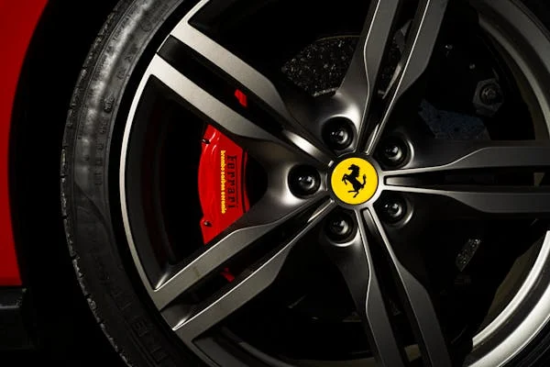The Future of Tyres: Innovations in Airless and Smart Tyres
 Source: Pexels
Source: Pexels
Tyres are often overlooked despite playing a vital role in keeping us safe during daily commutes and road trips. However, technology is transforming these rubber rings into advanced components that promote sustainability and revolutionise our driving experience. Like every other niche in the automotive space, the tyre industry is looking to the future. These advances also contribute to many professions that require driving. For instance, delivery drivers in bustling cities like London depend on reliable tyres to navigate the urban landscape efficiently. Many people are now exploring delivery driver jobs with their own cars in London on job aggregators like Jooble. These roles not only provide a source of income but also offer the flexibility to balance work with other commitments.
Pneumatic Tyres vs. Airless and Smart Tyres
The idea behind the tyre has remained unchanged since its invention in the late 19th century. The limitations of these pneumatic tyres drive the inspiration behind the latest tyre technologies.
Pneumatic tyres rely on air pressure to perform. As such, they are easily prone to damage, punctures, and other external factors. Realising this, stakeholders in vehicle development came up with airless tyres, also known as non-pneumatic tyres. Smart tyres are a later development that provide enhanced functionality. These tyres hold promising prospects for the future.
Airless Tyres: A Puncture-Proof Future
Airless tyres, also known as non-pneumatic tyres, were first introduced in the early 20th century to combat the challenges pneumatic tyres face. They function without relying on air pressure, utilising a unique structure made of flexible, high-strength materials such as thermoplastic resin.
Airless tyres became more popular in the early 2000s when various manufacturers began producing their own versions. Companies such as Michelin were pioneers in the field with their Tweel, which are essentially solid tread tyres that use wheels for support.
Challenges and Benefits of Airless Tyres
Airless tyres face various challenges, like including difficulty achieving similar ride comfort as pneumatic tyres, higher costs, and fluctuating performance in extreme conditions.
However, the benefits are undeniable. Below are some advantages of using airless tyres:
- Puncture-resistant;
- Lower maintenance costs;
- Minimum waste due to their durability;
- More reliable and safe;
- Suitable for harsh environments.
Smart Tyres: Technology Driving Enhanced Performance
Smart tyres are an upgrade in the tyre industry. Introduced in response to consistent technological advancements, smart tyres are a broader part of the Internet of Things. These connected tyres are equipped with sensors to provide real-time updates on tyre use and condition.
Smart tyres first gained popularity in the early 2000s thanks to their pressure monitoring capabilities. However, the 2010s marked the era of significant innovation, with functionality extending to monitoring parameters like temperature, load, and road condition.
Challenges and Benefits of Smart Tyres
Undoubtedly, smart tyres offer various benefits. However, their drawbacks cannot be ignored. The major challenges facing smart tyre innovations are cost and complexity. As with other new technologies, it is difficult to balance them with existing frameworks. Concerns also exist about privacy and security regarding the data that the tyres collect and transmit.
The good news is that these challenges are solvable and do not overshadow the benefits of smart tyres, which include:
- Smart tyres enhance real-time monitoring, transmitting data to the driver.
- They enable proactive and timely tyre management.
- Some smart tyres can adjust their characteristics based on the driving conditions.
- They enhance safety with timely updates.
Airless and Smart Tyres: Impacts and Future Trends in the Automotive Industry
Airless and smart tyres are the two major developments in the tyre industry. As the world shifts away from pneumatic tyres towards these new technologies, the question of their general impact on the overall automotive sector becomes more pertinent.
Below are some insights into what the future holds for these impressive innovations:
❖ Environmental Impacts
In response to a growing worldwide realisation of the impacts of ozone layer depletion and a shift towards more sustainable practices, the environmental effects of airless and smart tyres have become a major topic in the industry. These tyres are made to last longer and perform better than pneumatic tyres.
They can contribute to the industry’s drive towards sustainability. They have a longer lifespan and, as such, reduce waste. They also improve fuel efficiency and enhance battery health, greatly impacting the automotive industry and the environment.
❖ Increased Accessibility and Improved Acceptance
Continuous improvements in innovations will help solve the issue of reduced accessibility for airless and smart tyres. While they are currently expensive and unattainable for many, ongoing research and technological improvements will soon bring down costs.
Innovators have all hands -on deck, so you can expect them to solve the accessibility issues soon.
❖ Industry Collaboration and Innovation
Going forward, manufacturers of airless and smart tyres will increasingly collaborate. We have seen such efforts between Michelin and General Motors to produce safe, smart, airless tyres, increase automotive intelligence, and reduce tyre waste.
Additionally, smart and airless tyre makers collaborate with people in other industries, such as research and general automotive. These increased collaborations are bound to breed innovations that the world has yet to see.
Conclusion
The future of tyres is set for a transformation, driven by the advent of airless and smart tyre technologies. Thankfully, the changes are opening up opportunities and creating challenges.
Being aware of the opportunities is the only way to take advantage of them. In this article, we discussed the developments in airless and smart tyre technologies, giving an insight into their possible futures.




Comments